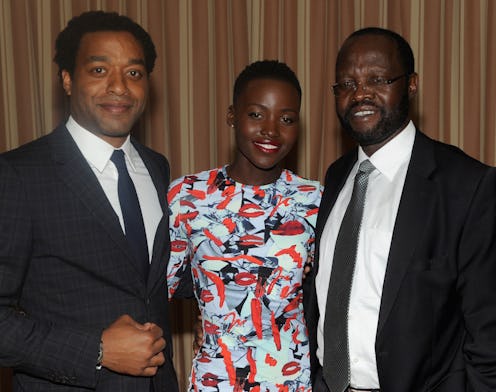Entertainment
Hollywood's Race Problem, in Infographic Form
Don't listen to anyone who tells you that Hollywood doesn't have a race problem. Because, guess what? It totally does. Sure, 12 Years a Slave did gangbusters on the awards circuit and Lee Daniel's The Butler gobbled up beaucoup bucks at the holiday box office, but a couple fancy statues and dollar bills do not a solution make. As evidenced by a brilliant if totally disheartening infographic from The New York Film Academy, Hollywood's race problem is far more insidious and offensive than those naysayers would have you believe. And it's time to make a change because — no shit alert! — diversity is a good thing.
Did you know that 81 percent of the movies black movie-goers see do not feature a black cast, storyline, or lead star? (Even though black films have a very similar return on investment as films like recent The Hunger Games sequel.) 81 percent! Sure, we can all relate to universal stories that exist outside of race, but the problem proves far deeper when you consider that Hollywood can barely muster the oomph to even get these characters on screen. When they are represented it's often quite problematic, with less black actors in the roles of caregivers or partners in a committed relationship than any other race. In interesting (read: upsetting) contrast, black sexuality is exploited in approximately 30 percent of their on-screen appearances.
And that's not all. The behind-the-scenes numbers are even more horrifying and unacceptable. Looking at the top 600 movies made in the last 6 years, only 33 were directed by black helmers. 33! And of that number only two were women. 5.5 percent and .33 percent respectively?! That is fucking pathetic, you guys! Similarly, of those 600 films, only 30 were written by black screenwriters. Considering African Americans make up 13.1 percent of the U.S. population, this is so far from acceptable.
Yes, there is momentum leading us in a direction that feels positive. Films like Fruitvale Station and Amma Asante's Belle are great examples of stories that highlight the inequality and downright disgusting ways in which race can play a major part in how others interpret and interact with black people, but there needs to be more. There needs to be a critical eye and a marked — and purposeful — change in the way black characters are represented. There needs to be more black actors, directors, and writers given the chance to tell their stories. And stories told by white people need to expand their often insular horizons. Because only through purposeful action can change really come about.
